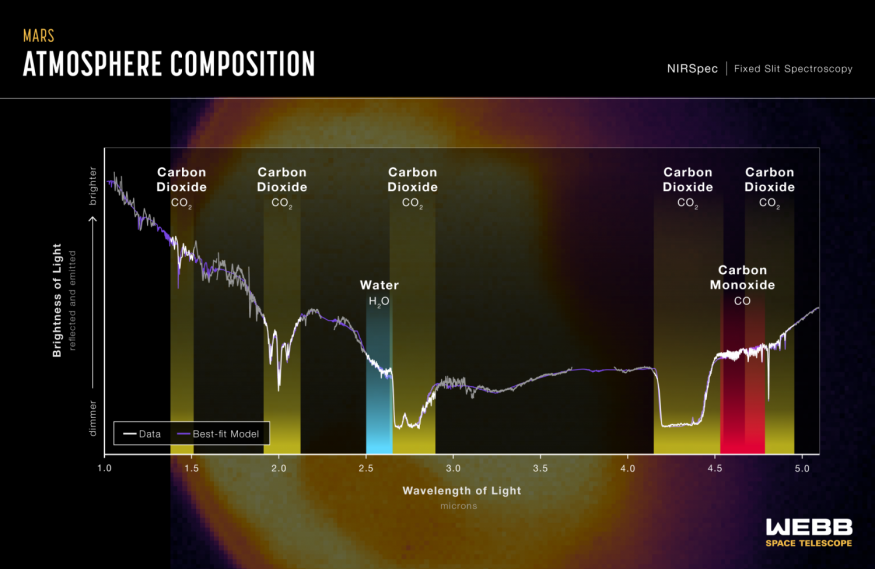The James Webb Space Telescope of NASA closed in on Mars for the first time, taking images and spectra of the Red Planet earlier this month.
The powerful telescope adds to the wealth of Martian data obtained by orbiters, rovers, and other telescopes by offering a distinctive perspective through its infrared sensitivity.
Views of Mars' visible disc are available from Webb's dedicated observation station at the Sun-Earth Lagrange point 2 (L2), which is the region of the sunlit side facing the telescope.
According to NASA, Webb will be able to capture images and spectra with the spectral resolution necessary to study transient phenomena like weather patterns, seasonal variations, and dust storms that occur on Mars.

The Bright, Red Planet Captured
The infrared light that Webb is equipped with detects visible light that human eyes can see. The Red Planet is among the brightest objects in the night sky.
The observatory has particular challenges since it was built to detect the exceedingly weak light coming from the universe's farthest-off galaxies.
However, NASA (per Science Alert) claims that scientists could compensate for Mars' unusual brightness by utilizing very short exposure times, only detecting a part of the light that reached the detectors and using specialist data analysis techniques.
The Near-Infrared Camera (NIRCam) reveals a region of the planet's eastern hemisphere in two distinct infrared light wavelengths or hues on Webb's initial images of Mars.

JWST's Spectroscopy
The Webb team's release of the first near-infrared spectrum of Mars added to the evidence that the newly constructed telescope can be used to conduct spectroscopic research on the Red Planet, Space.com said.
As opposed to images, which show differences in brightness incorporated over several wavelengths from place to place across the planet on a specific day and time, the spectrum shows the subtle variations in brightness between hundreds of different wavelengths that represent the planet as a whole, according to NASA.
To find out more about the surface and atmosphere of the Red Planet, astronomers will examine the characteristics of the spectrum.
Numerous spectral characteristics that disclose information about the atmosphere, frozen clouds, different types of rocks on the planet's surface, and dust are found in the results of a first-spectrum examination.
According to NASA, the Mars crew would subsequently study regional differences on the planet and seek trace gases like methane and hydrogen chloride that may be present in the atmosphere using these photos and spectroscopic data.
RELATED ARTICLE : NASA James Webb Space Telescope Leaks Secret Photos of Jupiter [LOOK]
Check out more news and information on Space in Science Times.












